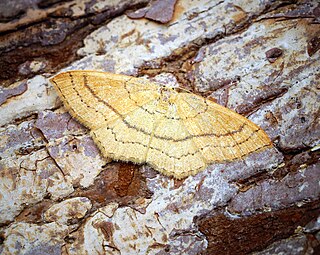
Cyclophora linearia, the clay triple-lines, is a moth of the family Geometridae. The species was first described by Jacob Hübner in 1799 and it can be found in Europe and Britain.

Cyclophora ruficiliaria, the Jersey mocha, is a moth of the family Geometridae. The species was first described by Gottlieb August Wilhelm Herrich-Schäffer in 1855. It can be found in Europe, in particular the Channel Islands as well as other parts of the mainland United Kingdom.
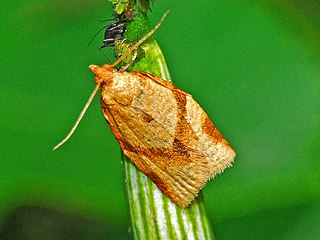
Clepsis consimilana, the privet tortrix, is a moth of the family Tortricidae.

Cydia duplicana is a small moth of the family Tortricidae. It is found in all across Europe, extending barely into Asia in the Transcaucasus, Turkestan and Kazakhstan.

Cydia illutana is a small moth of the family Tortricidae. It is found from western and central Europe, north to Scandinavia and east to Russia (Siberia).

Nola aerugula, the scarce black arches, is a moth of the family Nolidae. The species was first described by Jacob Hübner in 1793.

Entephria nobiliaria is a moth of the family Geometridae first described by Gottlieb August Wilhelm Herrich-Schäffer in 1852. It is found from Scandinavia to Siberia and in the mountainous areas of Europe.
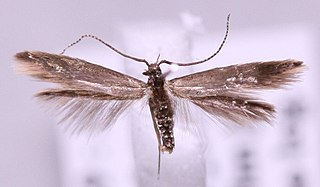
Coleophora fuscocuprella is a moth of the family Coleophoridae. It is found from Fennoscandia to the Pyrenees, Italy, Albania and Romania and from Ireland to Russia.

Coleophora taeniipennella is a moth of the family Coleophoridae. It is found in most of Europe.
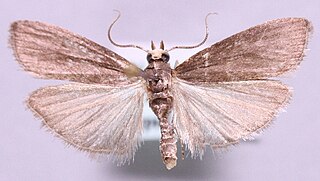
Salebriopsis is a monotypic snout moth genus erected by Hans-Joachim Hannemann in 1965. Its single species, Salebriopsis albicilla, was first described by Gottlieb August Wilhelm Herrich-Schäffer in 1849. It is found in most of Europe, except Ireland, Portugal, most of the Balkan Peninsula and Ukraine.
Citioica anthonilis is a species of moth in the family Saturniidae, which can be found from Central America to Brazil. The species was first described by Gottlieb August Wilhelm Herrich-Schäffer in 1854.
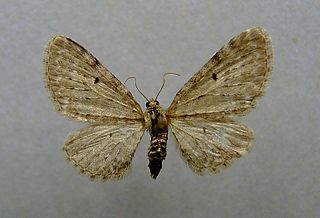
Eupithecia veratraria is a moth of the family Geometridae first described by Gottlieb August Wilhelm Herrich-Schäffer in 1848. It is found from the mountainous areas of Europe and Asia up to Japan.
Scopula asellaria is a moth of the family Geometridae. It was described by Gottlieb August Wilhelm Herrich-Schäffer in 1847. It is found in southern Europe and North Africa.
Scopula confinaria is a moth of the family Geometridae. It is found in southern Europe, southern Russia and Turkey.
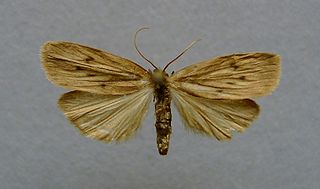
Pelosia obtusa, the small dotted footman, is a moth of the family Erebidae. The species was first described by Gottlieb August Wilhelm Herrich-Schäffer in 1847. It is found from central Europe through Asia to the Pacific Ocean.
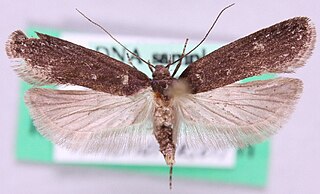
Neofaculta infernella is a moth of the family Gelechiidae. It was described by Gottlieb August Wilhelm Herrich-Schäffer in 1854. It is found in most of Europe and has also been recorded from North America.

Cochylimorpha hilarana is a species of moth of the family Tortricidae. It is found in most of Europe and Asia Minor. The wingspan is 17–23 mm. Adults have been recorded from wing from July to August.

Catocala lupina is a moth in the family Erebidae first described by Gottlieb August Wilhelm Herrich-Schäffer in 1851. It is found from south-eastern Europe to south-western Siberia, Asia Minor and Transcaucasia.

Scythris picaepennis is a moth of the family Scythrididae first described by the German entomologist Gottlieb August Wilhelm Herrich-Schäffer in 1855. It is found in Europe.

















